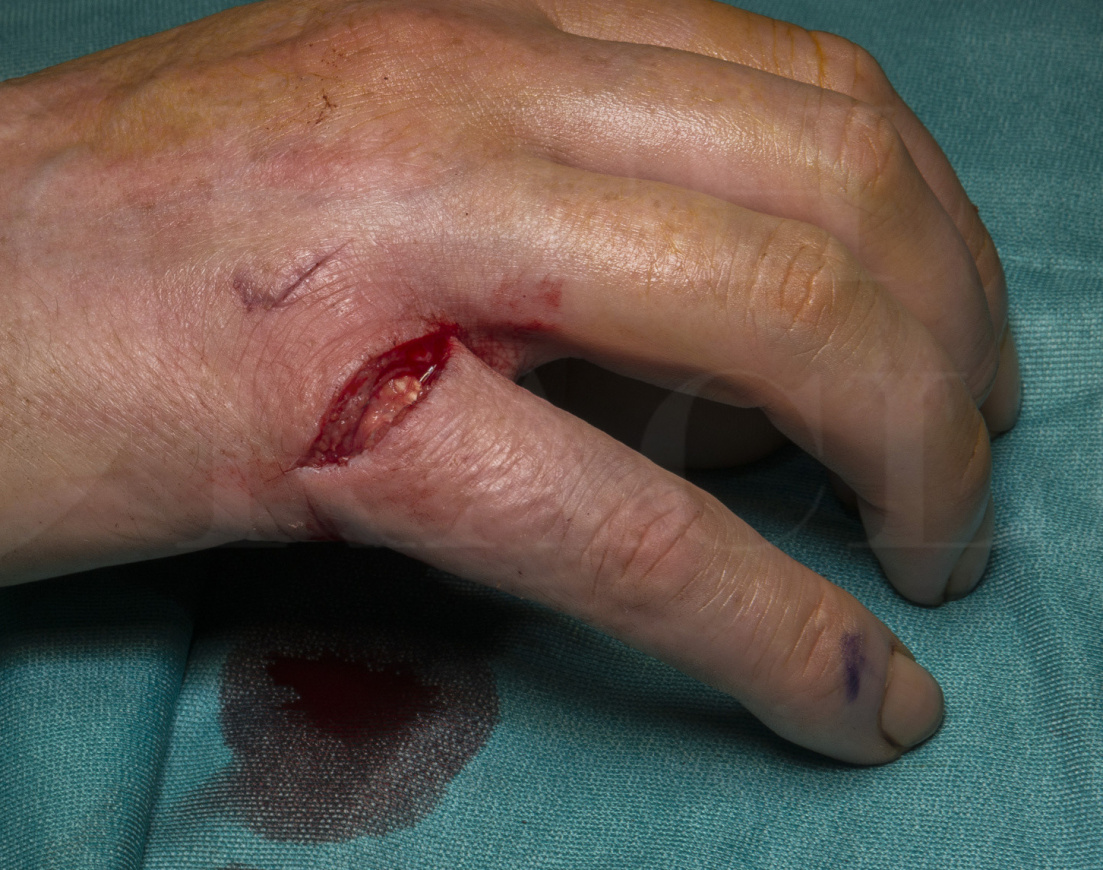Extensor tendon repair in zone 4 (hand)
Overview

Subscribe to get full access to this operation and the extensive Upper Limb & Hand Surgery Atlas.
Learn the Extensor tendon repair in zone 4 (hand) surgical technique with step by step instructions on OrthOracle. Our e-learning platform contains high resolution images and a certified CME of the Extensor tendon repair in zone 4 (hand) surgical procedure.
Extensor tendon injuries in the hand are commonly encountered by hand surgeons and have a peak incidence in working males between 20-29 years of age. Historically static splinting of these injuries was often advocated, but with plentiful evidence that surgical repair improves outcomes an understanding of the complex anatomy of the extensor tendon system is essential for their appropriate management.
From the perspective of extensor tendon injury and repair eight distinct zones are recognised, running from distal phalanx to the forearm. Repairing an extensor tendon injury without a good understanding of the the nuances of each individual zone of injury can result in an extensor lag, stiffness, or failure of the repair, all of which can have significant implications in a working population.
In contrast to flexor tendon injuries, the surgical management of extensor tendon injuries is not limited by the restrictions imposed by the fibro-osseous tunnel of the flexor system.
As with flexor tendon injuries though, the mechanism tends to be sharp lacerations for the most part. Attritional rupture secondary to degenerative and inflammatory conditions are a different category of injury whose management is not considered in this section. Least commonly avulsion type injuries can occur and may require repair also.
Surgical repair of extensor injuries are marked by certain unique challenges such as the thin flat nature of the distal extensor tendons which require alternatives to standard core suture techniques. In this section repair of a simple partial extensor tendon injury over the proximal phalanx (zone 4) will be demonstrated. Alongside this the important considerations of other extensor zones will be discussed.
As with all tendon injuries, the post-operative rehabilitation regime is of critical importance to ensure the best possible result is obtained.
Readers will also find the following OrthOracle techniques of interest:
Bony Mallet finger injury repair( Synthes Hook plate)
Extensor tendon repair in Zone 5 of the hand
Sagittal band reconstruction (Middle finger)
Transposition flap in the hand
Flexor tendon reconstruction: First stage using silicone spacer
Flexor tendon reconstruction: Second stage.
Flexor tendon repair: Reattachment of Flexor digitorum profundus using mini-mitek bone anchor.
Author: Tahseen Chaudhry FRCS (Tr & Orth)
Institution: The Queen Elizabeth Hospital, Birmingham, UK
Clinicians should seek clarification on whether any implant demonstrated is licensed for use in their own country.
In the USA contact: fda.gov
In the UK contact: gov.uk
In the EU contact: ema.europa.eu
Online learning is only available to subscribers.



















